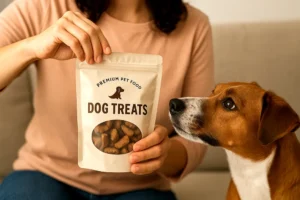Private label food manufacturing offers an excellent opportunity to build your own brand without the need to produce the goods yourself. With the right approach, you can create high-quality products and design custom packaging that appeals to different markets. This guide covers everything you need to know to start and package your private label food business effectively.
Why Private Label Food Manufacturing is a Smart Business Move
🍽️ Low Startup Costs: Save on production by partnering with manufacturers.
🏷️ Brand Control: Customize packaging and branding to match your vision.
📊 Market Flexibility: Quickly respond to consumer trends and market demands.
Step 1 Choose the Right Private Label Manufacturer
Selecting a reliable manufacturer is crucial for product quality and consistency:
- Research Suppliers: Identify manufacturers specializing in your desired food category.
- Request Samples: Evaluate product quality before committing.
- Check Certifications: Ensure compliance with food safety and industry standards (e.g., FSSAI, ISO).
- Negotiate Terms: Discuss minimum order quantities (MOQs), pricing, and delivery timelines.
Step 2 Identify Your Target Market and Product Niche
Understanding your audience helps you select and package products effectively:
📌 Health-Conscious Consumers: Organic, gluten-free, and non-GMO options.
📌 Gourmet Market: Premium ingredients and artisan packaging.
📌 Convenience Seekers: Ready-to-eat meals and grab-and-go snacks.
Step 3 Design Custom Packaging for Your Private Label Brand
Attractive and functional packaging helps your products stand out and stay fresh:
Popular Packaging Types
- Flexible Pouches: Lightweight and resealable for dry foods and snacks.
- Glass Jars: Ideal for sauces, spreads, and premium products.
- Rigid Boxes: Protective and great for luxury or gift items.
- Eco-Friendly Materials: Compostable and recyclable options for sustainable branding.
Must-Have Packaging Features
- Airtight Seals: Preserves freshness and prevents contamination.
- Tamper Evident: Ensures consumer safety and trust.
- Custom Labels: Display branding, ingredients, and regulatory information.
Step 4 Ensure Compliance with Food Labeling Regulations
Accurate and compliant labels are essential for consumer trust and legal standards:
- Product Name: Clearly identify the product.
- Ingredient List: List all ingredients in descending order by weight.
- Nutritional Information: Provide calories, macronutrients, and other key facts.
- Expiration Date: Include best-before or use-by dates.
- Manufacturer Details: Display contact information and production origin.
Step 5 Market and Distribute Your Private Label Products
Effective marketing and distribution drive sales and brand growth:
📦 Retail Partnerships: Collaborate with grocery stores and specialty shops.
🛒 E-commerce: Sell directly through your website and online marketplaces.
📣 Brand Storytelling: Share your brand’s mission and product journey through packaging and marketing materials.
Final Thoughts
Starting a private label food business allows you to bring unique products to market with minimal investment. By choosing the right manufacturer, designing custom packaging, and ensuring compliance, you can build a successful brand that resonates with your target audience.
Need custom packaging solutions? Explore our packaging design templates at PackagingSeller.com, tailored for private label food businesses.
How Can You Maintain Team Morale in the Face of Challenges?







